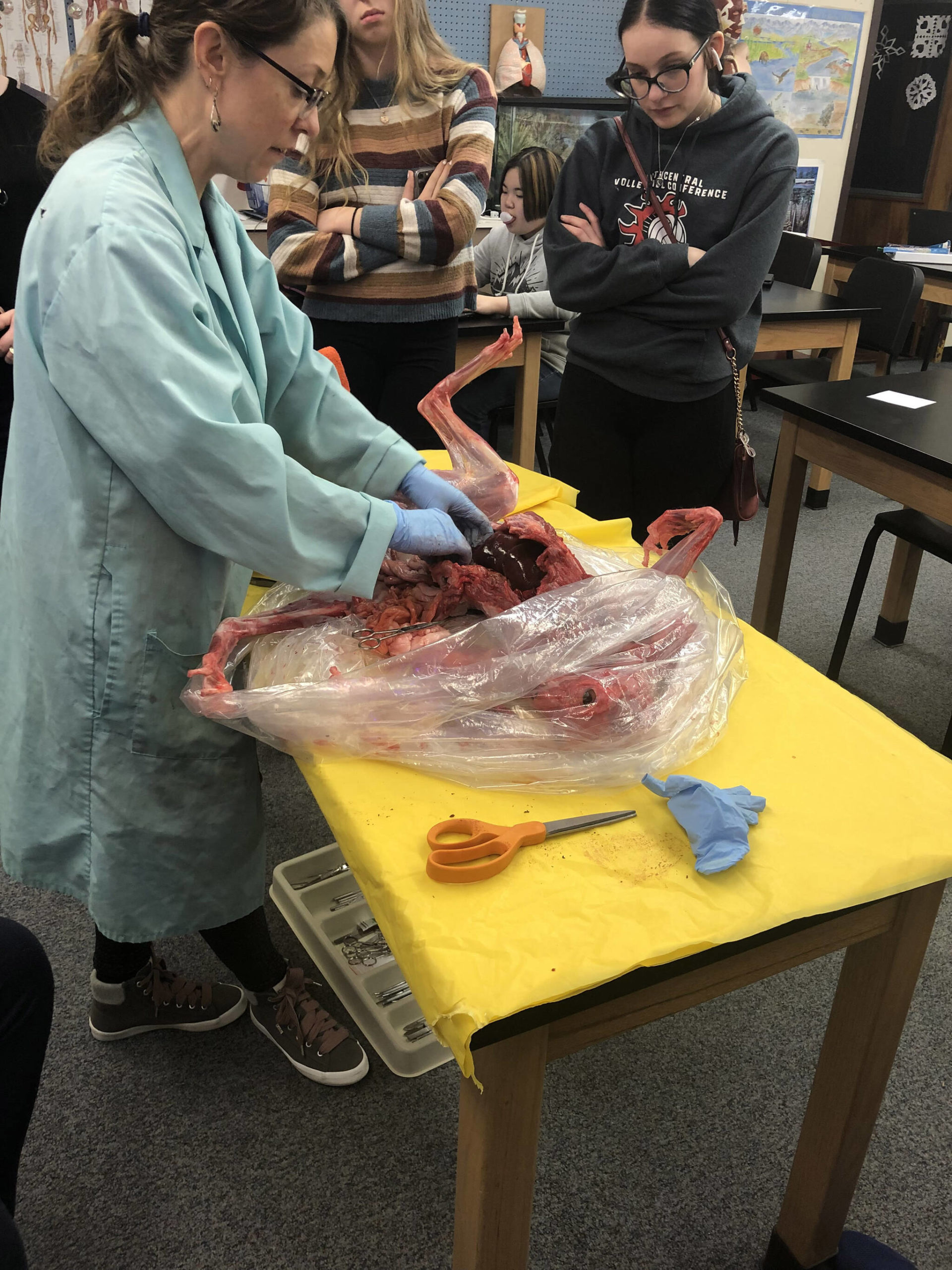When biology and anatomy students at Kenai Central High School walked into class Wednesday, Jan. 18, a skinned lynx was waiting on the table for them.
“A local trapper let me know there was a lynx, would I want to have it?,” anatomy and biology teacher Kristin Davis said Monday. “I rarely get to have the opportunity to dissect something fresh and unpreserved.”
While there are advantages to classroom dissections of preserved animals, which are part of anatomy courses led by Davis at KCHS, she said there are many benefits to seeing an unpreserved and unfrozen animal, especially a representative of the local wildlife.
So, only a couple of days after that phone call, the lynx was in the classroom.
The animal was dissected throughout the day, in each of Davis’ classes. Other science courses in neighboring classrooms were invited to participate.
Some students were eager, quick to come into the classroom and take a look into the lynx. Others gave the animal more of a berth. That’s a dynamic Davis said she usually observes on all dissection days, and that she plans for by encouraging students to pair as “a surgeon and an observer.”
Unlike most of the dissections held in Davis’ classrooms, there was only one animal, and so Davis herself fulfilled the surgeon role. Photos shared by the school on Facebook show Davis with gloved hands inside the large feline, closely surrounded by students and even other teachers.
“Overwhelmingly, I think they found it pretty fascinating,” Davis said.
Most of the animals dissections in Davis’ classroom not skinned. House cats, a familiar element of her course plan, come with fur on their heads and paws. The lynx did not.
“It allowed us to see some other things that we don’t normally see,” she said.
Students saw the long toes and the cartilage structures of the nose, something Davis said she herself hadn’t seen before. Without the obstruction of the ears, they could more clearly see the temporal bones of the skull.
Over the course of the day, students observed muscular structures in many ways similar to those of a human; they saw the teeth of a carnivorous animal, the throat, the lungs, the heart still in a pericardial sac, and the digestive system.
In the lynx, a larger feline, Davis said the class got a really good look at the vocal cords. Fresh red lungs could also be observed.
“Fresh kidneys? Much better than the preserved,” she said. “They’re beautiful.”
The heart, she said, is easier to dissect in a preserved animal because the blood is flushed out. That was not the case in the locally sourced lynx. Still, the valves could be observed.
“I was pushing the comfort level for some,” Davis said.
Dissections, especially of local animals, are a unique opportunity that Davis said she always tries to seize and offer for her classes — a series of dissections have long been a part of her courses.
“I love doing this stuff,” she said. “I love sharing those experiences with my students.”
Reach reporter Jake Dye at jacob.dye@peninsulaclarion.com.

